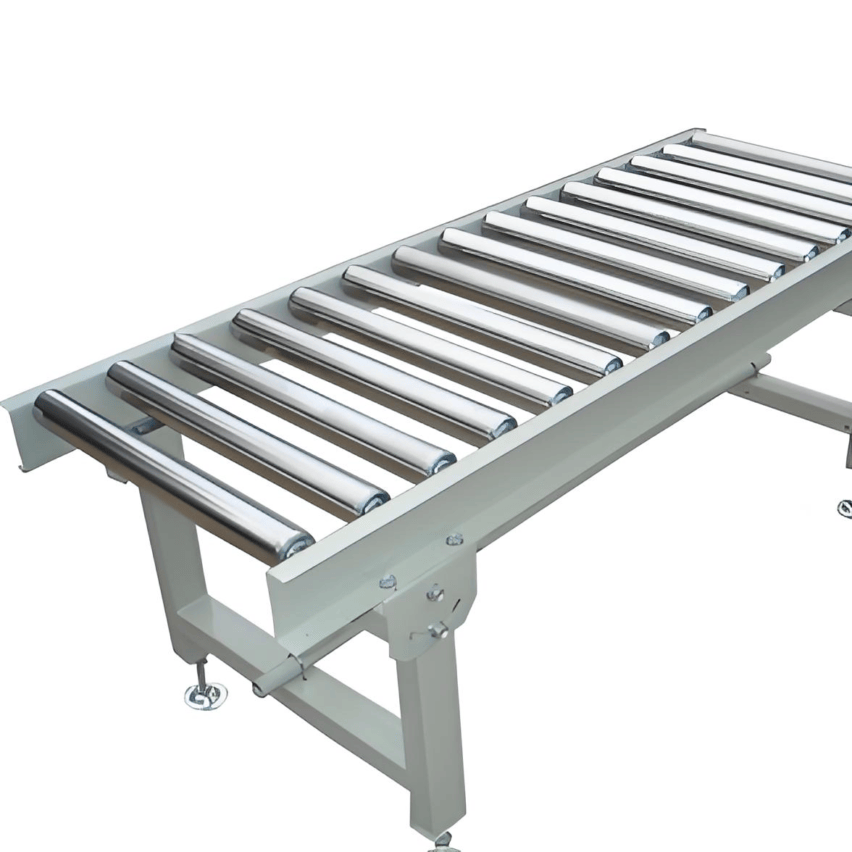Are you also in the headache - food factory to change the product model, the production line will have to stop work to adjust the equipment? Bottles and cans on the assembly line is always pouring, the rate of defective products can not be suppressed? Don't worry, let's talk aboutAdjustable Clamping Conveyor LineHow to use "smart" solutions to these old problems. I've been to dozens of food factories, and I've seen this system turn a torturous production line into an intelligent assembly line that "listens".Cost savings and efficiency gainsIt's all solid!
Pain point direct attack: food production line "can not be clamped, not adjusted" predicament
Core problem: Why do traditional conveyor lines always drag their feet when changing production?
What do food factories fear most? Orders to be small quantities of many varieties! Today, filling Coke, tomorrow to change the yoghurt bottle, the day after tomorrow to change the square box ... ... The traditional conveyor line clamping distance is dead, change a product will have to stop and manually adjust the screws. A crisp factory statistics.I'm wasting 37 hours a month just adjusting equipment.This is equivalent to producing 150,000 fewer packets of chips! Not to mention that manual spacing inevitably shakes the hand, too tightly clamped to crush the biscuits, too loosely clamped to collapse the bottle.
Frequently asked questions before upgrading a clamping conveyor line:
- Time-consuming changeover: Mechanical adjustments can easily take 1-2 hours, and the production line is idling and burning money.
- High residual rate: Uneven clamping force leads to bottle pouring, liquid leakage, package deformation
- Flexible production is difficult to achieve: Inability to respond quickly to small custom orders
Intelligent solutions: letting the conveyor line "learn" to adjust the pitch by itself
The central question: What makes an adjustable clamping conveyor line switchable in seconds?
The key is in that.Dual motor + screw adjustment system! Look at this principle: one set of motor tubes conveys (first drive motors), the other set is dedicated to pitch adjustment (second drive motors). When adjusting the pitch, the second motor drivesLeft and right rotating screwsTurning, the nut on the screw moves the connecting frame - just like synchronising in and out left and right when screwing. What's moreHydraulic locking of clamping platesAfter adjusting the position, the drive cylinder pushes the clamping plate to "bite" the connecting frame, and the vibration will not run away even if it is big.
Three major breakthroughs in Smart Plus::
- Precisely programmable spacing: Operator inputs the product size on the touch screen, the conveyor belt pitch is automatically adapted with an accuracy of ±0.5mm.
- Dynamic adjustment of clamping force: PU hollow pressure cylinder elastic clamping, like a "cushion glove" for fragile omelettes.
- Data-driven error-proofing: Visual sensor real-time detection of the position of the bottle, skewed over the limit immediately stop the alarm
Getting results on the ground: from consumption black hole to profit engine
The central question: how much can I really earn back by investing in this system?
Jiangsu, a marinade factory on the adjustable clamping line after the calculation of the account: the original change of production adjusting machine 2 hours / times, now5 minutes to complete the switchoverIn addition, it saves 800 man-hours a year. Residual rate from 6% down to 0.8%, the light packaging materials less waste of 120,000 per month. More ruthless is a nut factory in Zhejiang - by this system to take over the high-end supermarkets of a36 customised gift boxesSmall orders that would never be thought of with a traditional production line!
Benefit disaggregation (in the case of a food factory with an annual production capacity of $500 million)::
| norm | pre-conversion | after conversion | Efficiency gains |
|---|---|---|---|
| timing of change of production | 120 minutes/session | 5 minutes/trip | Province 92% |
| defective rate | 4.7% | 0.9% | Drop 80% |
| power consumption | 18 kWh/million pieces | 14 kWh/million pieces | Province 22% |
| Customised order intake | ≤3 models/month | ≥15 sections/month | Five times. |
The future is here: when the clamping conveyor line meets the AI brain
The central question: where else can intelligence break through?
Crown Monkey Intelligence to a chili factory to do the programme has played out flowers: conveyor line access to the factory MES system, can bePredicting clogging risk. For example, it detects a drop in the speed of the front-end packaging machine and automatically slows down the conveying rhythm; it detects fluctuations in the clamping force and immediately alerts the replacement of wear parts. Even more ahead of the curveSelf-learning optimisation-System records the clamping parameters of different products and directly recommends the best settings when encountering similar new products.
Personal observation: Don't underestimate this "regulation" function! It essentially puts aflexible jointThe competitiveness of the food factory of the future will depend on who can transform the production line from a "block" to a "Lego set". The competitiveness of the food factory of the future will depend on who can transform the production line from "one piece" to "Lego set". After all, consumers want personalisation, so you need to be able to produce mini cans one day and co-branded versions the next...Adjustable Clamping Conveyor Line, the first pivot point for flexible production.
Exclusive Perspectives: A freeze-dried fruit and vegetable factory found unexpected value in using an adjustable clamping line - due to the reduction of manual intervention.The risk of microbiological contamination in the workshop is directly reduced by 65%It seems that "smart" is not only a cost saver, but also a new defence for food safety! It seems that "smart" not only saves costs, but is also a new line of defence for food safety!













